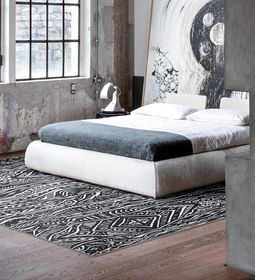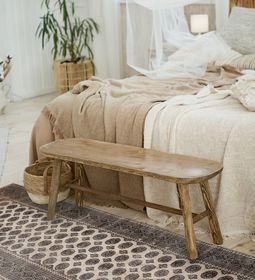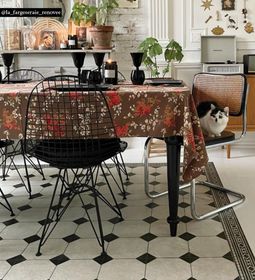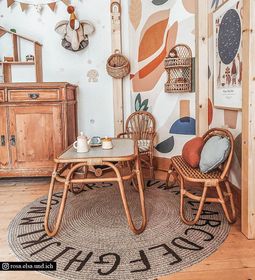Find the Ideal Wall Art to Invigorate Your Dining Room
Updated March 2, 2023
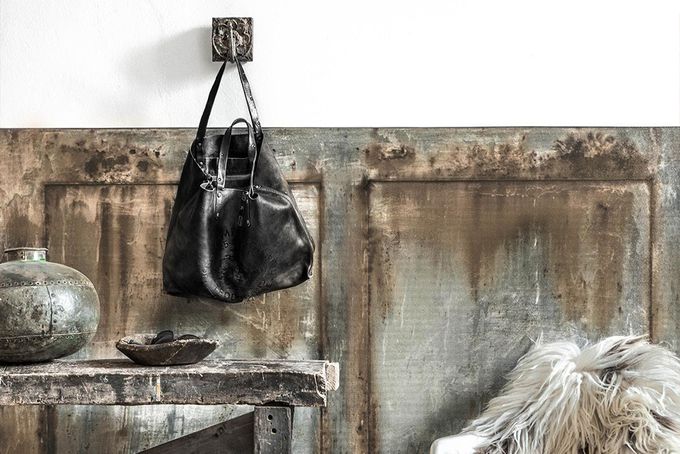
Each room in your home has a different function and should have its own identity, and the dining room is no exception. One way of making a unique stamp on your dining area is through the art you incorporate. Art can transform any living space, especially wall art, due to its prominence and visibility.
There are a few basic guidelines that will help you select the perfect artwork to inject life and personality into your dining room.
However, this doesn't mean you need art hung on every wall. The key to any great design is to create harmony and maintain balance. Empty wall spaces can actually accentuate the art that you do choose. So in your purchasing process, select pieces that truly speak to you—quality is always better than quantity in this instance.
Small or Large Wall Art for Your Dining Room?
The size of your art should be one of your first considerations. This is where choosing art for your dining room gets slightly more technical. Opting for small or large decorative wall art pieces depends on whether you want one focal point or several smaller pieces in the room.
As a rule of thumb, artwork in the dining room should be around two-thirds the length of your dining room table. It should only exceed this size if you have a single large statement piece in the room.
If you prefer smaller art, they can come across as out of proportion in relation to the wall space. So, it's an excellent idea to group several smaller pieces that share similarities. This could be color, subject matter, paint medium, or art from the same artist. We recommend leaving about two inches between the frames for a balanced, attractive look.
Best Types of Wall Art for Your Dining Room
There are countless options of wall art ideas and options to choose from when decorating your dining room. We've summarized the most suitable types for your dining area to get you inspired:
Statement Pieces
As we just discussed, large-scale art gives your dining room a great focal point. But because it has such an impact, you should choose something that really speaks to you.
The advantage of having a single artwork is that there's no need to harmonize it with other art, which can be a bonus if you find it difficult to coordinate different pieces.
We suggest considering a more minimalist or abstract statement piece, as it will be more versatile, and you're less likely to get tired of it.
Mirrors
Mirrors have been used to decorate dining rooms for ages—and for a good reason. They are functional as people may want to check their appearance after eating, and they instantly give the illusion of more space. The shape and frame (if any) you choose is a simple way to add to the design style you are trying to achieve.
Wallpaper
Wallpaper is easy to overlook, but it can have as much of an impact as artwork. You can choose to create one feature wall or cover all your dining room walls with a paper of your choice. If you have a smaller space, we recommend focusing on color and texture rather than busy patterns or designs that can make the room feel smaller.
Beija Flor has a collection of thoughtfully-designed wallpapers that perfectly complement a range of design styles.
How to Choose the Best Dining Room Wall Art
Are you feeling overwhelmed with choices and unsure where to start? Here are a few tips to simplify the process:
- Determine your budget as this will guide your choice. If you're spending a considerable amount on the art, opt for something more timeless than trendy.
- Be clear on your design style and the vision you're trying to create.
- Factor in the size of your dining room, and decide on the size and number of artworks you'd like.
- Decide whether you want to use contrasting colors for a bold pop or if you'd prefer your art to blend in with the wall color.
- Lastly, don't rush the process! Do your homework, consider your options, and don't buy on a whim.
Hanging Wall Art in a Dining Room
Once you've made that all-important decision, you'll need to hang your artwork. The process of hanging your wall art will depend on the pieces you've chosen. If you're hanging larger pieces, oil paintings, thick frames, or anything else that's heavy, you'll need to drill holes into your wall and hang them with screws. Alternatively, you can use nails. Lightweight pictures and other wall art pieces can be placed on the wall with double-sided tape, but be sure to clean the wall before adhering the tape.
Check out our blog on choosing wall art for your living room if you're moving on to the next room of your house!


